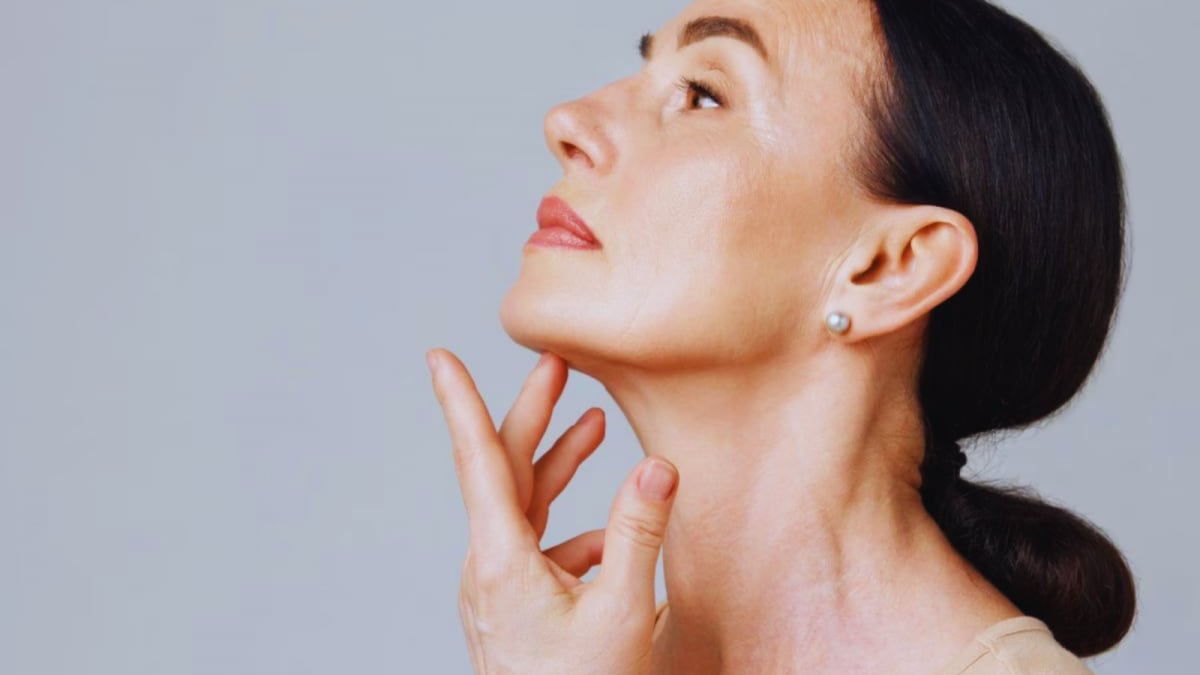Wrinkle Formation Is Driven By Physics And Not Just Collagen Loss, New Study Reveals

Last Updated:July 26, 2025, 19:42 IST
A new study has revealed that wrinkles are formed due to how the skin tugs at the surface. The study mentioned that sun exposure and ageing accelerate this process.
Proper skincare and a healthy lifestyle can prevent wrinkles and loose skin. (News18)
It’s a common belief that wrinkles form due to age or prolonged sun exposure. But new research from Binghamton University challenges that notion, revealing that the mechanics of skin play a major role in how creases develop. Led by biomedical engineer Guy German, the study analysed human skin samples from donors aged 16 to 91 and found that, over time, skin doesn’t stretch and retract uniformly.
Instead, as the skin ages, it begins to tug more across its surface rather than along it, remaining under constant pressure even when at rest. When this sideways strain becomes too much, the skin folds, forming the familiar lines we associate with ageing.
Published in The Journal of the Mechanical Behaviour of Biomedical Materials (July 22, 2025), this study offers the first concrete evidence that the development of wrinkles is rooted in physical stress, while collagen loss and UV exposure merely accelerate the effect.
To study this mechanical behaviour, researchers used a low-force tensometer to apply gentle strain to skin samples. Younger skin showed resilience, snapping back into place without issue. Older samples, however, responded differently, contracting more across the surface than along the direction of pull. This mismatch created internal pressure, eventually causing the top layer to fold in on itself.
This crumpling is known in engineering as “buckling” – a structural failure seen when materials are compressed unevenly. While previous models predicted this outcome, the Binghamton research is the first to document it using real human tissue.
Sun Damage Mimics and Speeds Up Ageing
Age isn’t the only factor behind this buckling effect. Ultraviolet radiation is known to break down two key proteins in the skin: collagen and elastin. These proteins are crucial for elasticity and support. According to German, young individuals chronologically can experience early-onset wrinkling due to chronic sun exposure.
The research explains why those with outdoor professions like farmers and sailors often develop deep lines earlier than peers who spend most of their time indoors. Sunlight essentially accelerates the mechanical breakdown that leads to creasing.
Most anti-ageing products today focus on boosting collagen levels or preventing moisture loss. However, this new study suggests that the future of wrinkle care may lie in managing the physical stress within the skin.
Researchers are exploring advanced solutions such as tension-balancing mesh patches and bioactive peptides that guide how skin cells arrange their fibres. Rather than treating just the symptoms or chemical changes, these innovations aim to delay the structural tipping point that leads to permanent wrinkles.
Daily Habits That Still Make A Difference
While the research opens new doors, dermatologists stress that time-tested skincare practices remain essential. Daily use of sunscreen remains the best defence against photo-ageing. Retinoids continue to be effective in repairing collagen networks, and a diet rich in proteins supports the skin’s structural integrity. Gentle facial exercises may help maintain balanced tension across different facial muscles, possibly preventing the uneven stress identified in the study. Staying hydrated and getting enough sleep are also crucial, as they help maintain a flexible, well-supported skin matrix that’s less prone to physical buckling.
view comments
- Location :
Delhi, India, India
- First Published:
[title_words_as_hashtags




